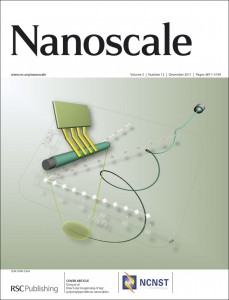 We would like to share with you a selection of high impact articles, published in Nanoscale covering a wide range of energy research.
We would like to share with you a selection of high impact articles, published in Nanoscale covering a wide range of energy research.
On behalf of the Editors-in-Chief, Chunli Bai (CAS President, NCNST, Beijing), Jie Liu (Duke), Wei Lu (Michigan), Markus Niederberger (ETH Zurich), and Francesco Stellacci (EPFL), we invite you to submit your best research to Nanoscale.
With an international readership, across the many disciplines involved with nanoscience and nanotechnology and a first (2011) Impact Factor of 5.91, Nanoscale is the ideal place to publish your research.
Nanoscale has very fast times to publication. Our Accepted Manuscript service means research is published and can be cited on average within 1 day of acceptance
Sign up to receive our free table-of-contents e-alert at www.rsc.org/alerts and be among the first to read our newest articles.
Read this high-impact energy research today:
Reviews
Recent advances in solar cells based on one-dimensional nanostructure arrays
Miao Yu , Yun-Ze Long , Bin Sun and Zhiyong Fan
DOI: 10.1039/C2NR30437F
Building one-dimensional oxide nanostructure arrays on conductive metal substrates for lithium-ion battery anodes
Jian Jiang, Yuanyuan Li, Jinping Liu and Xintang Huang
DOI: 10.1039/C0NR00472C
Synthesis and optical properties of II–VI 1D nanostructures
Muhammad Iqbal Bakti Utama , Jun Zhang , Rui Chen , Xinlong Xu , Dehui Li , Handong Sun and Qihua Xiong
DOI: 10.1039/C1NR11612F
Semiconductor nanostructure-based photovoltaic solar cells
Genqiang Zhang, Scott Finefrock, Daxin Liang, Gautam G. Yadav, Haoran Yang, Haiyu Fang and Yue Wu
DOI: 10.1039/C1NR10152H
The role of nanomaterials in redox-based supercapacitors for next generation energy storage devices
Xin Zhao, Beatriz Mendoza Sánchez, Peter J. Dobson and Patrick S. Grant
DOI: 10.1039/C0NR00594K
Nano active materials for lithium-ion batteries
Yonggang Wang, Huiqiao Li, Ping He, Eiji Hosono and Haoshen Zhou
DOI: 10.1039/C0NR00068J
Oxide nanowire networks and their electronic and optoelectronic characteristics
Nripan Mathews, Binni Varghese, Cheng Sun, Velmurugan Thavasi, Björn P. Andreasson, Chornghaur H. Sow, Seeram Ramakrishna and Subodh G. Mhaisalkar
DOI: 10.1039/C0NR00285B
Original research
3D branched nanowire heterojunction photoelectrodes for high-efficiency solar water splitting and H2 generation
Ke Sun, Yi Jing, Chun Li, Xiaofeng Zhang, Ryan Aguinaldo, Alireza Kargar, Kristian Madsen, Khaleda Banu, Yuchun Zhou, Yoshio Bando, Zhaowei Liu and Deli Wang
DOI: 10.1039/C2NR11952H
Polyaniline nanowire array encapsulated in titania nanotubes as a superior electrode for supercapacitors
Keyu Xie , Jie Li , Yanqing Lai , Zhi’an Zhang , Yexiang Liu , Guoge Zhang and Haitao Huang
DOI: 10.1039/C0NR00899K
Polyaniline-intercalated layered vanadium oxide nanocomposites—One-pot hydrothermal synthesis and application in lithium battery
Yuping Chen, Gang Yang, Zihui Zhang, Xiaoyan Yang, Wenhua Hou and Jun-Jie Zhu
DOI: 10.1039/C0NR00246A
Architectural integration of the components necessary for electrical energy storage on the nanoscale and in 3D
Christopher P. Rhodes, Jeffrey W. Long, Katherine A. Pettigrew, Rhonda M. Stroud and Debra R. Rolison
DOI: 10.1039/C0NR00731E
Preparation of TiO2 nanowires/nanotubes using polycarbonate membranes and their uses in dye-sensitized solar cells
Dong Kyu Roh, Rajkumar Patel, Sung Hoon Ahn, Dong Jun Kim and Jong Hak Kim
DOI: 10.1039/C1NR10525F
Plasma effects in semiconducting nanowire growth
Kostya (Ken) Ostrikov, Dong Han Seo, Hamid Mehdipour, Qijin Cheng and Shailesh Kumar
DOI: 10.1039/C1NR10658A
Template synthesis of SnO2/α-Fe2O3 nanotube array for 3D lithium ion battery anode with large areal capacity
Weiqian Zeng , Feipeng Zheng , Ruizhi Li , Yang Zhan , Yuanyuan Li and Jinping Liu
DOI: 10.1039/C2NR30089C
Nanorainforest solar cells based on multi-junction hierarchical p-Si/n-CdS/n-ZnO nanoheterostructures
Wei Wang, Qing Zhao, Kevin Laurent, Y. Leprince-Wang, Zhi-Min Liao and Dapeng Yu
DOI: 10.1039/C1NR11123J
A nanostructured graphene/polyaniline hybrid material for supercapacitors
Hualan Wang, Qingli Hao, Xujie Yang, Lude Lu and Xin Wang
DOI: 10.1039/C0NR00224K
Vertically building Zn2SnO4 nanowire arrays on stainless steel mesh toward fabrication of large-area, flexible dye-sensitized solar cells
Zhengdao Li, Yong Zhou, Chunxiong Bao, Guogang Xue, Jiyuan Zhang, Jianguo Liu, Tao Yu and Zhigang Zou
DOI: 10.1039/C2NR30279A
Optical and electrical applications of ZnSxSe1−x nanowires-network with uniform and controllable stoichiometry
Junpeng Lu, Hongwei Liu, Cheng Sun, Minrui Zheng, Mathews Nripan, Gin Seng Chen, G. Mhaisalkar Subodh, Xinhai Zhang and Chorng Haur Sow
DOI: 10.1039/C2NR11459C
Ab initio modeling of TiO2 nanotubes
Dénes Szieberth, Anna Maria Ferrari, Yves Noel and Matteo Ferrabone
DOI: 10.1039/B9NR00214F
Submit your best research to Nanoscale.


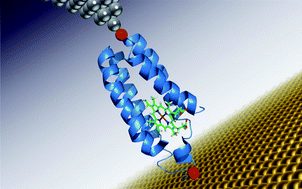










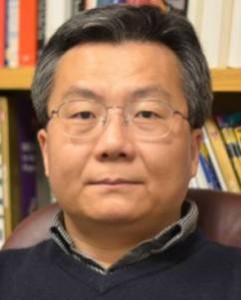
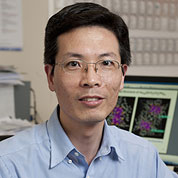

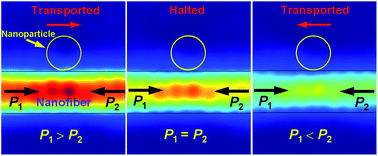


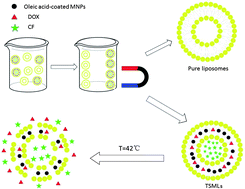

 US and Chinese chemists say that they’ve
US and Chinese chemists say that they’ve